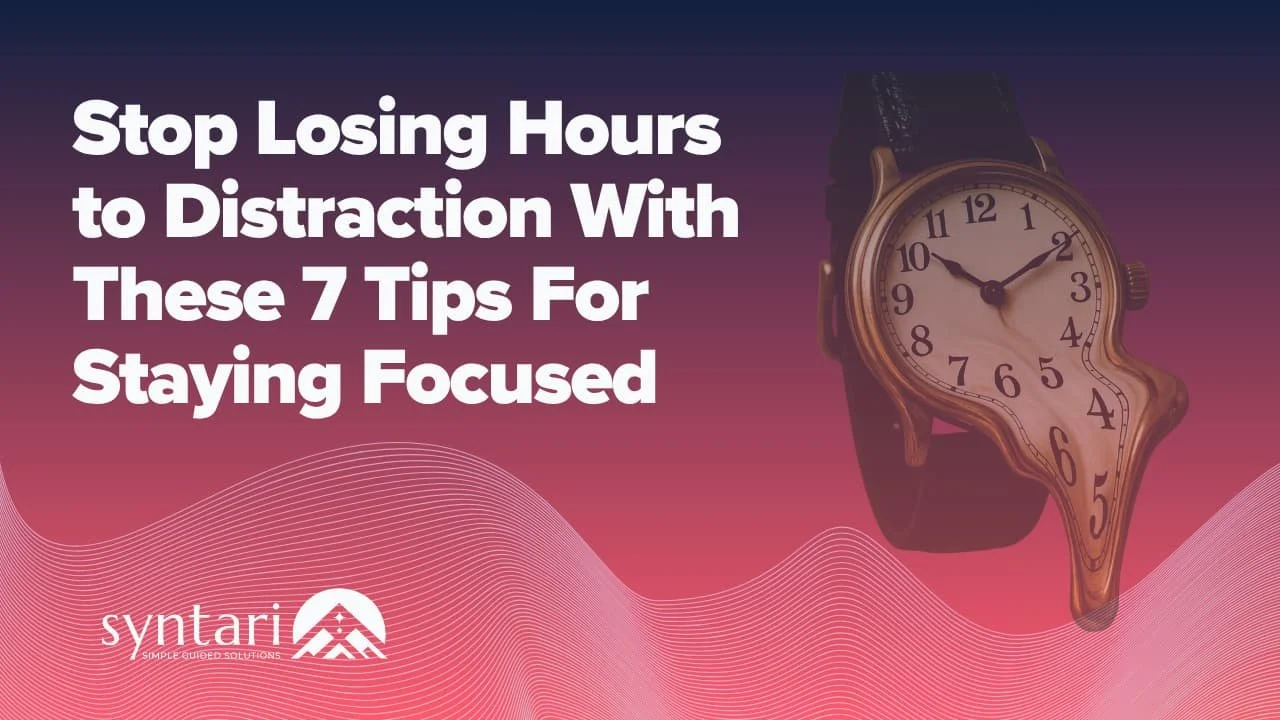7 Tips To Reduce Context Switching and Remain Focused
Context Switching is Killing Your Productivity
Have you ever checked your email for a minute and found yourself distracted? You look up, and suddenly 30, 45, or even 60 minutes have flown by? That’s the danger of something called "Context Switching", which is our tendency to switch from one unrelated task to another.
When we are multitasking or simply looking for a distraction, this behaviour can lead to wasted time and productivity. But with some tips and tricks, it is possible to reduce context switching and stay focused on what matters most. Keep reading to discover 7 tips for staying focused so you can remain productive.
What Does Content Switching Look Like?
Context switching is the process of shifting attention from one task to another or from one environment or context to another. It can be caused by external factors, such as notifications or emails demanding your attention, or internally when you switch between tasks because you are bored or get distracted.
Let’s use the email example from above. If you’re anything like me, here’s what actually happens when you click on each new email notification as it appears:
You open up your email and read the new message (3 minutes)
You think about what you want to write back (5 minutes)
You realize you need information from another program, so you log in to that (5 minutes)
You copy/paste the information and craft your response (10 minutes)
You review the email, edit it, and finally hit send (10 minutes)
You might as well glance at social media while you’re at it (10 minutes)
You struggle to get back into the creative “zone of genius” (15 minutes)
A quick check of your email has turned into a 58-minute distraction.
Not good.
7 Tips to Reduce Context Switching To Remain Focused and Productive
Reducing context switching is an important way to save time and avoid getting distracted by unimportant tasks. Studies show that it takes 23 minutes to return to a task after a distraction. To prevent this from happening, try implementing these strategies so that you can stay focused and remain productive.
Prioritize tasks: Focus on your critical tasks and assign time windows for each. Try to break down big projects into smaller, more manageable chunks and prioritize them in order of importance. Doing this can reduce the risk of getting distracted by less important tasks.
Block out time for distraction-free work: Set aside specific blocks of time for uninterrupted work by turning off notifications, setting an alarm for the end of the session, and establishing a routine that will help you stay focused and avoid unnecessary context switches.
Create a distraction-free environment: Minimize or eliminate distractions in your workspace, such as noise, clutter, and too many interrupting conversations so that you can concentrate on the task at hand without letting other tasks or activities get in the way.
Exercise mindfulness: Pay attention to how often you switch tasks, and try to be aware when your mind starts to wander off from what you’re doing. Make it a point to take breaks throughout the day to give your brain some rest before jumping into the next task.
Use technology wisely: Leverage technology to help keep you organized and on track with your tasks, such as scheduling reminders or alerts for when tasks need to be completed or setting automatic redirection of emails from certain contacts during particular times of day when you don’t want to be bothered.
Audit yourself regularly: Keep track of where your time goes throughout the day and review it periodically to determine any patterns or distractions that might be causing unnecessary context switching and taking away from productive work time.
Set boundaries: Keep your environment conducive to productivity by ensuring those around you understand when interruption is, and isn’t, appropriate. Whether it’s an officemate, a family member or even a well-meaning friend, make sure everyone knows how important uninterrupted focus time is for the successful completion of tasks.
With these tips in place, you can maximize efficiency while reducing distractions or other activities that might take away from productive work hours!
Found this post helpful?
The biggest compliment I can receive is a share. Share this post with a friend or colleague to help expand our DC community!

